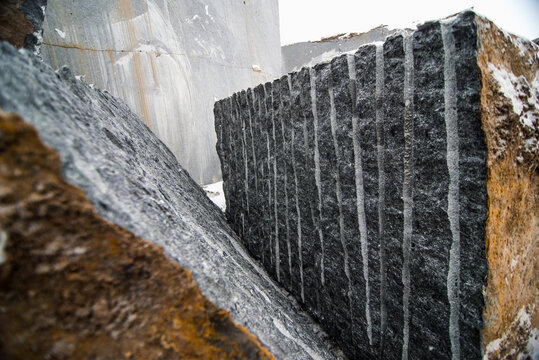Revealing the Mysteries of Granite Quarrying: Where Toughness and Elegance Meet
The world of granite quarrying is a realm where the raw toughness of nature converges with human creativity to develop frameworks that stand the test of time with an air of beauty. From the depths of quarries to the careful sprucing up in workshops, the procedure of changing granite into architectural wonders is a complex dance of practice and development. As we peer into the depths of this ancient craft, we start to reveal the concealed ins and outs that form the extremely significance of our built setting.
The Origins of Granite Quarrying
In the record of architectural background, the origins of granite quarrying are shrouded in a tapestry of ancient workmanship and geological marvels. Going back to ancient Egypt and Mesopotamia, the extraction of granite from quarries noted the start of a trip that would eventually lead to the creation of several of the world's most iconic structures.
Granite quarrying's origins can be mapped to the experienced artisans who recognized the rock's durability and aesthetic allure. Through a mix of primitive tools and large decision, these very early quarry employees discovered granite blocks that would become the building blocks of human beings.
As human beings advanced, so did the strategies of quarrying granite. The Romans, renowned for their engineering prowess, developed innovative techniques for drawing out granite to construct monoliths, holy places, and roads that stood the examination of time.
The tradition of these old quarrying methods remains to form modern-day style, with granite continuing to be a sign of strength and style in building and construction jobs around the world. (granite quarries in south africa)
Devices of the Quarrying Trade
The evolution of granite quarrying strategies from ancient civilizations to modern-day times highlights the vital role played by the devices of the quarrying profession in shaping the sector's practices. In old times, quarrying devices were primary, commonly containing knives, hammers, and wedges made from materials like bronze or iron. These devices required substantial manpower and time to remove granite blocks from quarries.

Additionally, the introduction of pneumatic devices and high-powered equipment has actually dramatically lowered the physical labor called for in quarrying procedures, improving worker security and productivity. As the quarrying internet market remains to introduce, the devices of the trade remain at the forefront of driving progression and forming the future of granite extraction.
Extracting Blocks of Granite
Making use of precision equipment and advanced techniques, the removal of granite blocks from quarries has actually become an advanced procedure in the contemporary quarrying industry. Regulated blasting strategies are then used to damage apart the granite right into manageable sections.

Sprucing Up and Completing Methods
To accomplish a remarkable surface on granite blocks, knowledgeable artisans utilize a like it series of careful polishing and completing methods. After the first removal and shaping procedures, the granite blocks undertake an extensive polishing phase to improve their all-natural charm and toughness.
In addition to sprucing up, ending up techniques are applied to additional fine-tune the granite's appearance. By meticulously choosing and using these polishing and completing strategies, artisans can transform raw granite obstructs right into exquisite items that showcase both stamina and sophistication.

Environmental Effect and Sustainability
With the growing emphasis on environmental my review here consciousness in the market, granite quarrying techniques are progressively scrutinized for their effect on natural sources and long-term sustainability. Furthermore, the transport of granite from quarries to refining facilities generates carbon emissions, further adding to ecological destruction.
To mitigate these effects and ensure sustainability in granite quarrying, sector stakeholders are adopting numerous actions. Carrying out innovative innovations to lower power consumption and water usage, redeeming quarried land for ecological reconstruction, and promoting liable sourcing techniques are some methods being employed. In addition, qualifications such as the Forest Stewardship Council (FSC) and the Management in Power and Environmental Design (LEED) aid consumers recognize ecologically pleasant granite items.
Conclusion
In verdict, granite quarrying is a process that requires specialized devices and techniques to remove blocks of granite and polish them to a high degree of finish. While the environmental effect of quarrying can be significant, initiatives are being made to improve sustainability techniques in the industry. On the whole, granite quarrying is a delicate equilibrium between harnessing the stamina and elegance of this all-natural rock while lessening its influence on the atmosphere.